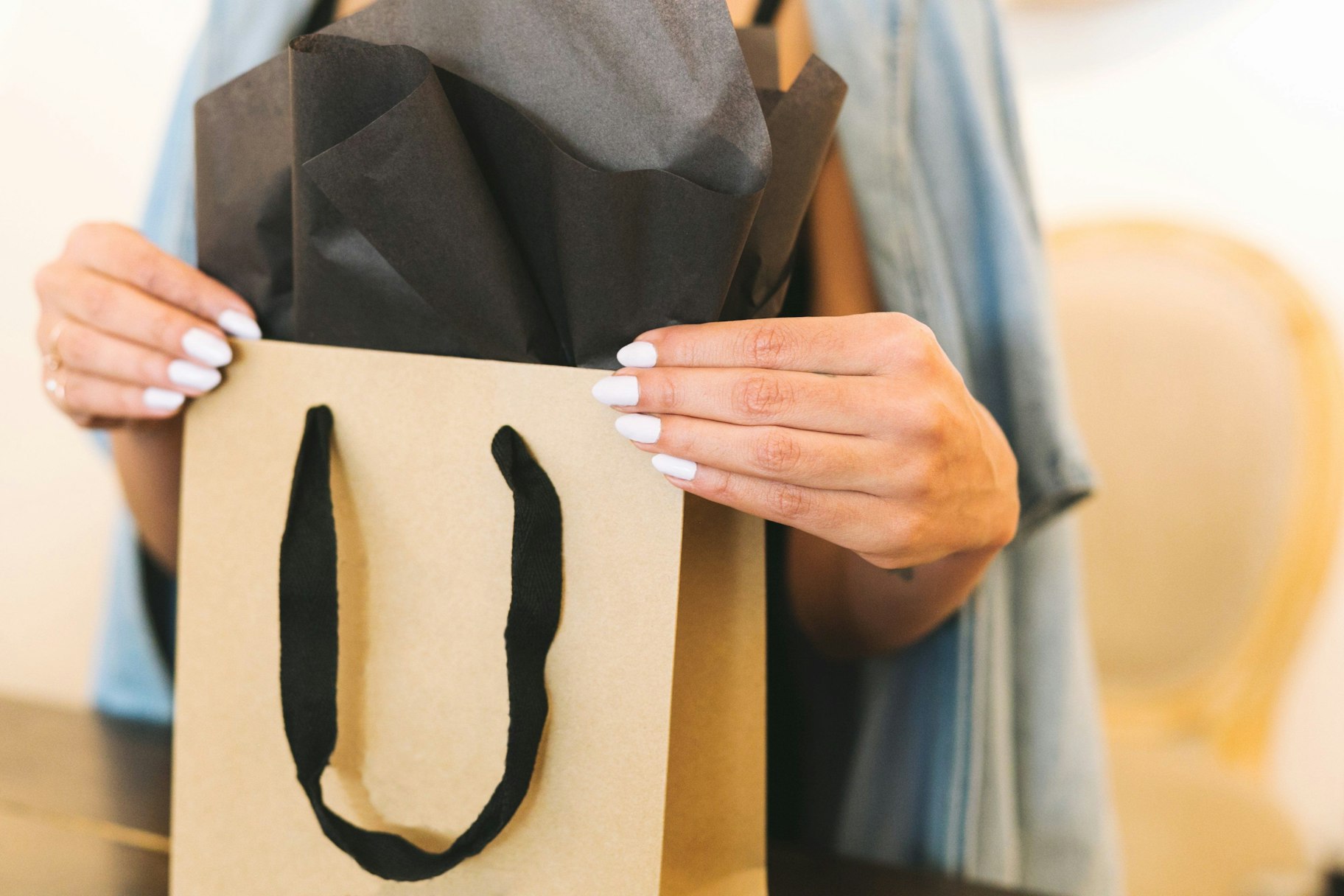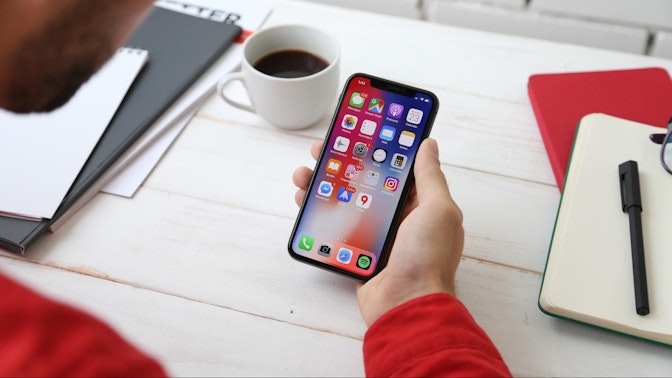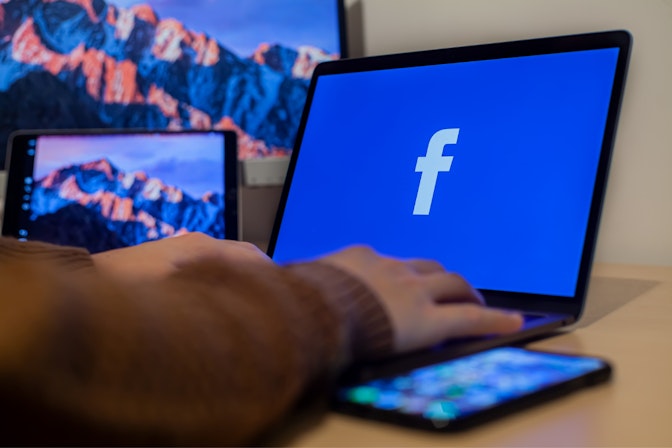It’s important to keep your customers happy.
How important?
Allow us to illustrate with a few brand loyalty statistics:
- Customers with an emotionally charged relationship to a brand have a 306 percent higher lifetime value than those who don’t.
- 50 percent of customers said they’ve left a brand they were loyal to because a competitor was a better fit for their needs.
- 33 percent of customers will consider switching brands after just one poor experience.
To recap: You should definitely be investing in building brand loyalty, whether it’s through a full-fledged customer loyalty program or using strategies like amazing customer service and optimized customer experiences.
In this article, we’ll go over the importance of brand loyalty, benefits and examples, and some steps and tools for building brand loyalty for your business.
Post Contents



What Is Brand Loyalty?
By definition, brand loyalty is “the tendency of some consumers to continue buying the same brand of goods rather than competing brands.”

→ Click Here to Launch Your Online Business with Shopify
Essentially, it’s your customer’s desire to stay your customer. Viewed from your end of the business, it’s customer retention – your ability to keep customers coming back in the long run.
Brand loyalty can be driven by several factors.
Maybe your products have unbeatable quality. Maybe your customer service is impeccable, leaving them with a smile every time they interact with you. Maybe you closely align with their beliefs and values to the point that they see your brand as an extension of themselves.
But remember: Just because a customer makes more than one purchase doesn’t necessarily mean they’re loyal. You might just have a cheaper or more convenient offering, which can easily be scooped up by a competitor.
The key difference is that brand loyalty is deeply rooted in positive emotions – trust, comfort, relatability, satisfaction, and others that make you their No. 1.
Why Is Brand Loyalty Important?
To put it frankly, building brand loyalty is a guaranteed path to keeping your business afloat and thriving.
If you’re not able to retain your customers, you’re going to have to perpetually sink money into marketing and advertising techniques to find new ones.
Some say that can cost five times more than what you’d spend keeping your current customers happy. (Or seven times more … or 25 times more, depending on who you ask.)
So, why is brand loyalty important? It gives your business the beautiful gift of these benefits:
Benefits of Brand Loyalty
Here are just a few of the many benefits of brand loyalty.
- Higher profit margins
In a SuperOffice survey, 52 percent of respondents said that customer retention was their highest source of revenue. After that came customer acquisition at 45 percent.
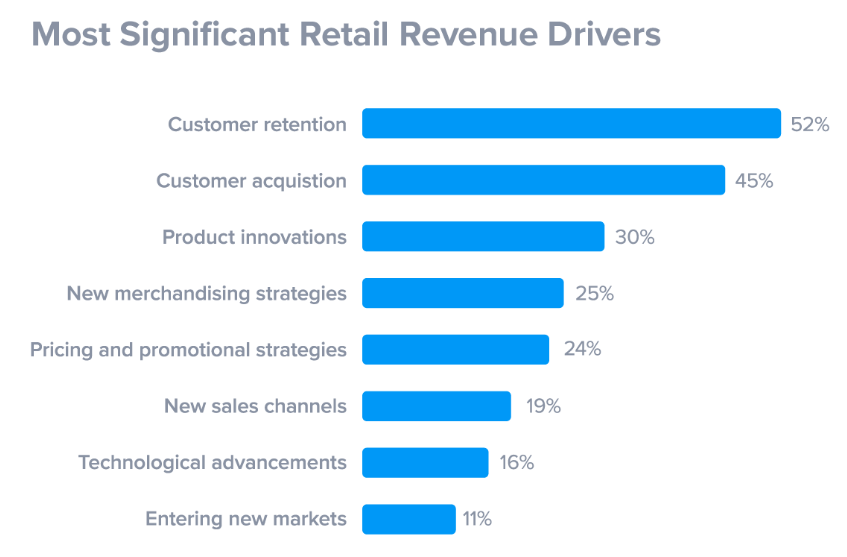
One of the reasons for this is that returning customers spend up to 67 percent more on average than new customers – giving your customer lifetime value (CLV), or total dollar value of each customer, a nice boost.
And as previously mentioned, being able to keep more customers means you can maintain your revenue and growth without needing to shell out loads of extra money on strategies like customer acquisition and customer conversions.
If enough of your customers are coming back on their own, you can theoretically earn the same amount of revenue without having to spend an extra dime on marketing.
So, if you’re spending less and earning more, voila – higher profits.
- Better brand recognition
When customers love you, it creates a ripple effect.
People start to talk about you. They recommend you to their friends and family, and even give you free marketing in the form of voluntary shoutouts on social media.
This free marketing can extend into the coveted realm of user-generated content, in which they’re flaunting your product or service in action just to brag to their friends. (Which, by the way, is something you can add to your social media marketing plan, too.)
Ultimately, this goodwill and positive word of mouth makes you more popular and easy to recognize in your niche. This, in turn, makes it easier for you to convert prospects into new customers – whether it’s successful referrals from current customers or people who find your brand in other ways.
- Protection against changing market conditions
There are oh so many things that can go wrong while you’re quietly minding your own business (pun intended).
Here are a few examples of how conditions in your market can change and the potential importance of brand loyalty in protecting you from the aftershock:
- Say that a new competitor storms your niche. If customers are certain that you’ll give them what they want with a consistently amazing experience, they won’t even look twice at the other guys.
- Say your main competitors suddenly drop their prices, but you can’t keep up. Loyal customers know the premium price for premium experiences and won’t jump ship so easily. One study shows that up to 80 percent of customers are willing to spend more for better experiences.
- Say there’s an economic recession in your main market. Adobe research shows that brand loyalty continued to bring revenue boosts despite hard times for customers and businesses.
- Protection against reputation blows
Have you ever heard or seen something bad about a company you love? What about a company you’re ambivalent about?
Chances are, if you’re devoted to a brand, bad reviews and other negative reputation impactors will have less of an influence on your decision to stay with them. If what you see doesn’t align with your own experiences, it automatically has less clout.
That’s part of why building brand loyalty can be so beneficial. It takes a lot more than just a bad review to push those customers away – and trust us, you’re going to get at least a couple of bad reviews.
That’s just the way the consumerism cookie crumbles.
So, now that you know the importance of brand loyalty, let’s dip our toes into how you can build it.
How to Create a Brand Loyalty Program
One of the best brand loyalty strategies is to create a brand loyalty program, also called a customer loyalty program.
You’ve seen them around – sign up with a brand to receive points, extra discounts, and other rewards when you make certain purchases, refer a friend, or otherwise engage with a brand.
Customer loyalty programs are so effective because they make your customers feel special. Also, who doesn’t love a good deal or free perks?
Here are a few types of brand loyalty programs and examples of companies that use them well.
Points-Based Brand Loyalty Programs
True to the name, these brand loyalty programs award you points for certain actions, which you can then redeem for rewards.
Beauty brand Sephora is an example of a company that makes a killing from its rewards program. It has more than 17 million members, and its members are responsible for as much as 80 percent of the company’s revenue.
Their program gives you points in the dollar amount of your purchases. If you spend $57, that’s 57 points.
Customers can then redeem their points for all kinds of goodies, like makeup, skincare products, and even exceptional rewards for true VIPs, like facials, a beauty benefit, or a house call to touch up your brows.
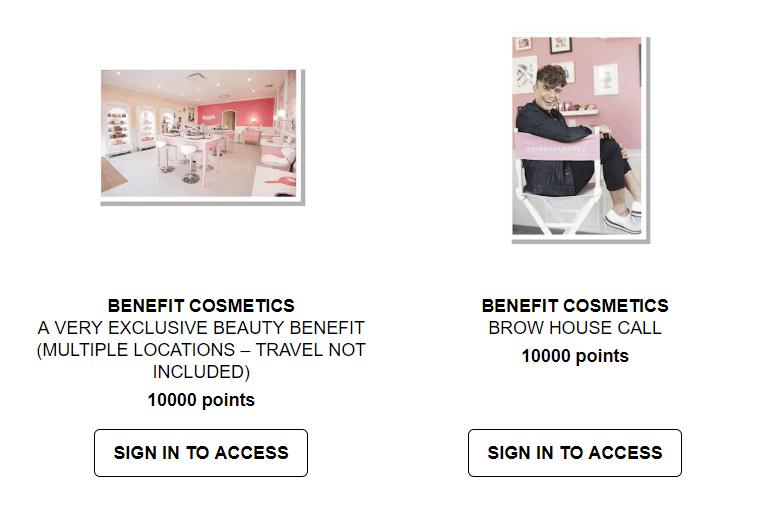
Tiered Brand Loyalty Programs
Tiered brand loyalty programs are typically points-based, too, but they also divide members into tiers based on their participation and engagement. The higher the tier a customer is in, the more perks they get.
SheFit does this beautifully, with a program that earns “crowns” (or fancy-looking points) for actions like signing up, sharing or following on Facebook and Instagram, and celebrating their birthday, in addition to crowns per dollar spent.
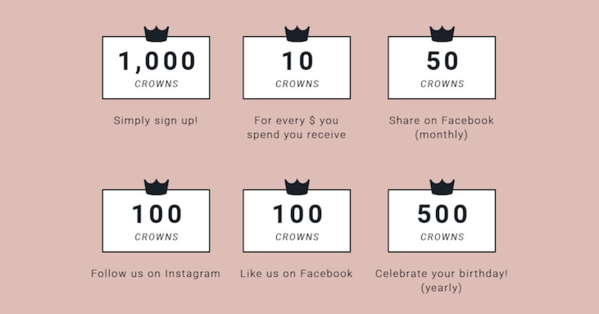
The program has four tiers, each offering special perks that compound on each other. For example, someone in the “VIP She” tier gets 100 crowns for sharing on Facebook, whereas the lower tiers get only 50.
Other high-tier perks include early access to sales, sneak peeks at new products, an annual gift, and even being featured in the company’s social media promotions and product shoots.
Those are some serious perks.
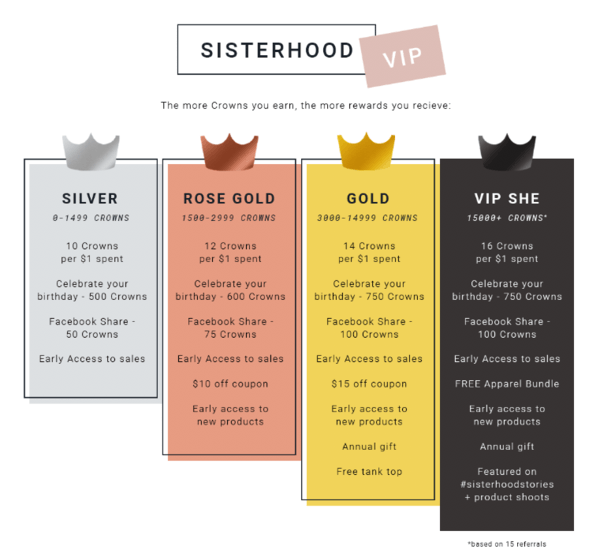
VIP Brand Loyalty Programs
A VIP brand loyalty program takes the tiers to a whole new level by offering outstanding perks for the highest tiers.
These programs have a clever strategy of identifying and absolutely pampering their most loyal customers.
Neiman Marcus and Bergdorf Goodman even call their brand loyalty program InCircle. If that doesn’t appeal to a lavish sense of exclusivity and specialness, we don’t know what does.
The InCircle program has five circles (or tiers). But here’s the cool part: Starting at Circle Three, customers are mailed a physical card called The Perk Card.
This card gets them unique benefits like in-store dining, valet parking, alterations, salons, and upkeep of valuable items like jewelry, handbags, and shoes.
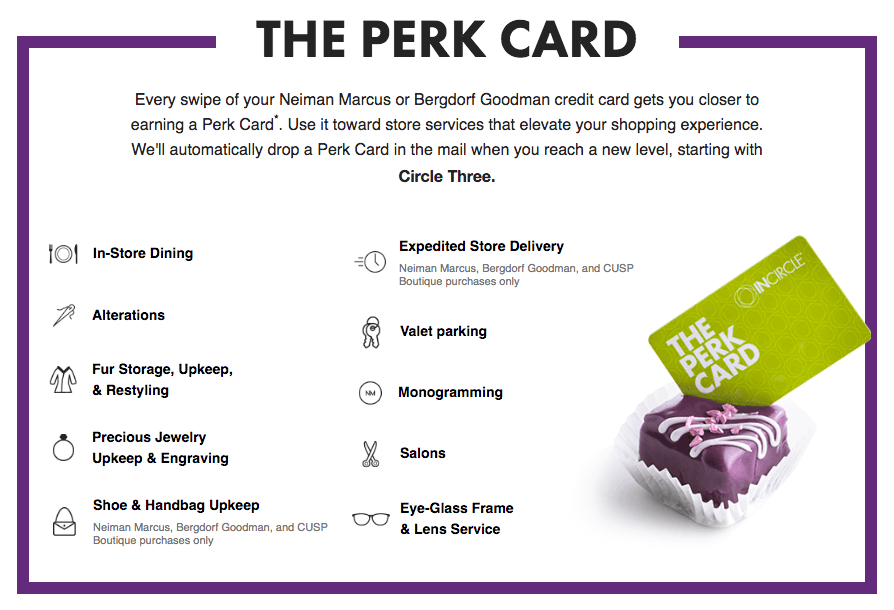
As you can see, Neiman Marcus and Bergdorf Goodman really know their target audience – they know that they own luxury items that need special attention like furs and high-quality jewelry, and they use this as leverage to become more involved in their customers’ lives.
While a dedicated program can work wonders for building brand loyalty, it’s not the only way.
How to Build Brand Loyalty: 3 Additional Tips
There are several loyalty strategies that you can build into every part of your brand strategy and marketing tactics. We take a look at a few actionable ones below.
1. Shift Your Customer Service Into High Gear
This is a no brainer. Just one positive interaction can make a customer’s fears and doubts over doing business with you slip away. In its place, you can gain a lasting appreciation and word of mouth that generates referrals for your brand.
However, canned responses aren’t going to win you any brownie points. If you want to win customers over, you’re going to need to take things up a notch. You can do this by:
- Listening to your customers – get feedback through post-purchase surveys, social listening, etc.
- Being responsive to all questions/complaints/comments
- Anticipating customers’ needs – For example,f you’re selling high-ticket items, offer an insurance policy to give them peace of mind
2. Personalize the Customer Experience
Another great way to build customer loyalty is to make your customers feel like you not only understand their needs, but also care about them on an individual level. This can be done with the help of personalization.
According to a report from Business Insider, 44 percent of people will likely become repeat shoppers after a personalized customer experience with a brand. This is supported by a 2018 survey, which revealed that 87 percent of marketers who leveraged personalization experienced a noticeable lift in business results.
If you’re new to the concept of personalization, start small. This can mean sending personalized cards and emails to your customers. Below is an example from ProFlowers. The company uses two personalization tokens, including the customer’s first name and a request for feedback.
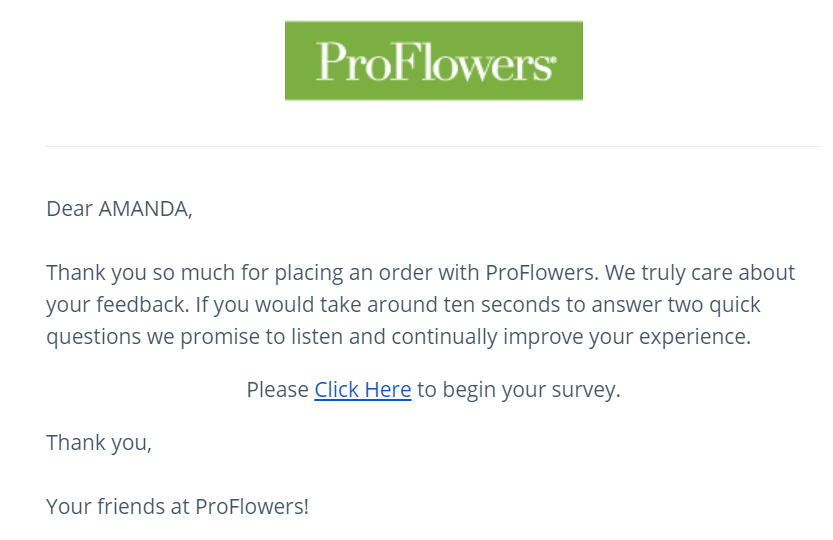
The above email is simple enough to replicate in your own branding, and it makes the customer feel like they’re your one and only audience.
3. Leverage User-Generated Content
Sharing UGC (user-generated content) in the shape of customer success stories, testimonials, reviews and other content is a great way to increase brand loyalty. Instagram is a key place for finding customer images and brand mentions that you can boast about to the rest of your fans.
For instance, brands such as Luxy Hair regularly share and repost content that talks about the satisfactory experience their product or service delivered from their customers’ Instagram profiles.

Simply put, user-generated content allows you to acknowledge your existing customers while also impressing new ones. So, dig into your social media profiles to find UGC that you can use to build and improve brand loyalty.
Brand Loyalty Tools and Apps
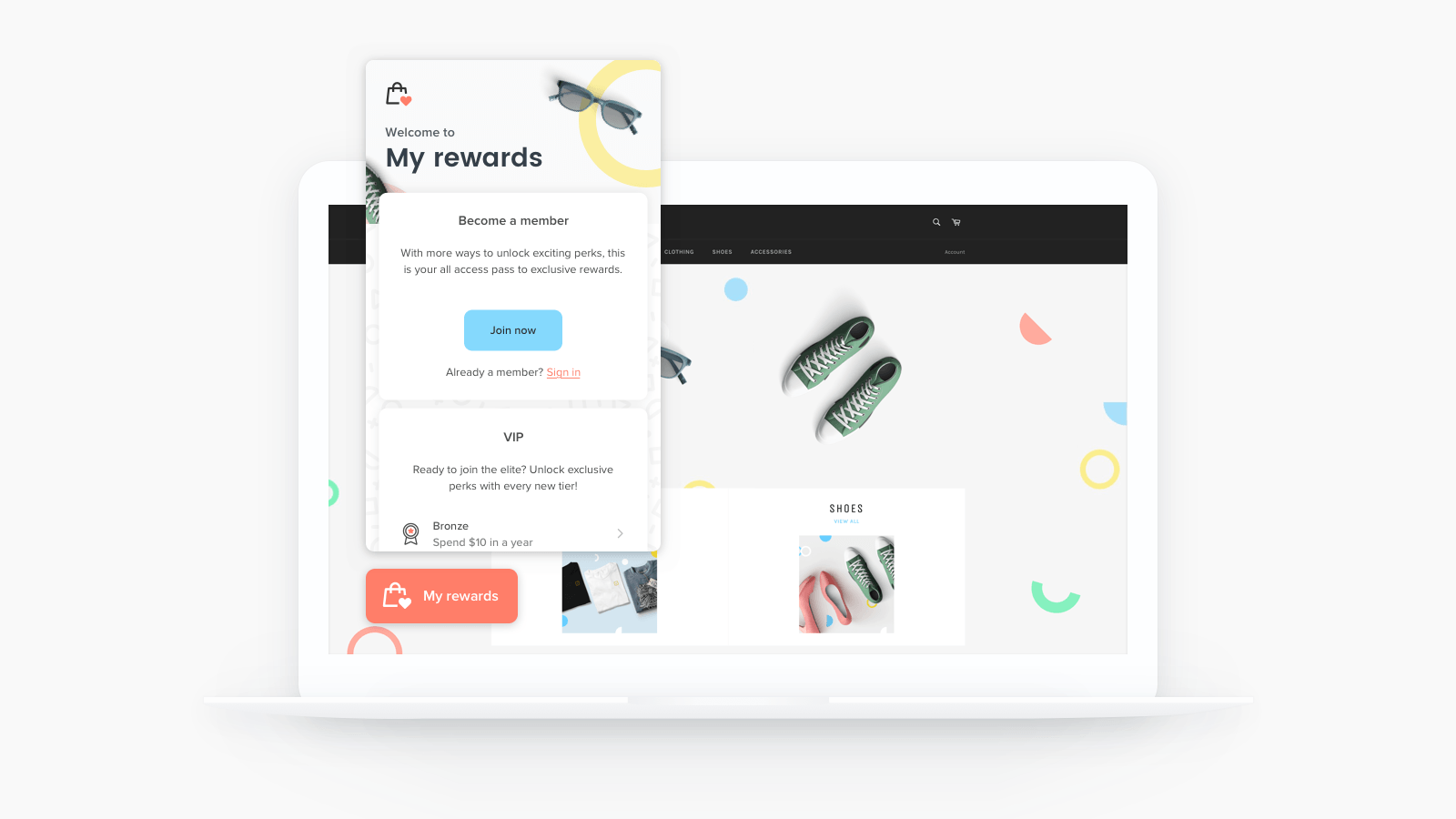
Smile.io lets you create three programs: a loyalty points program, referral program, and VIP program. You can reward your customers in ten-plus ways, like account registrations, purchases, referrals, social shares, and more.
If you’re hesitant about making the investment, you can customize your programs using the free version to take it for a test run.
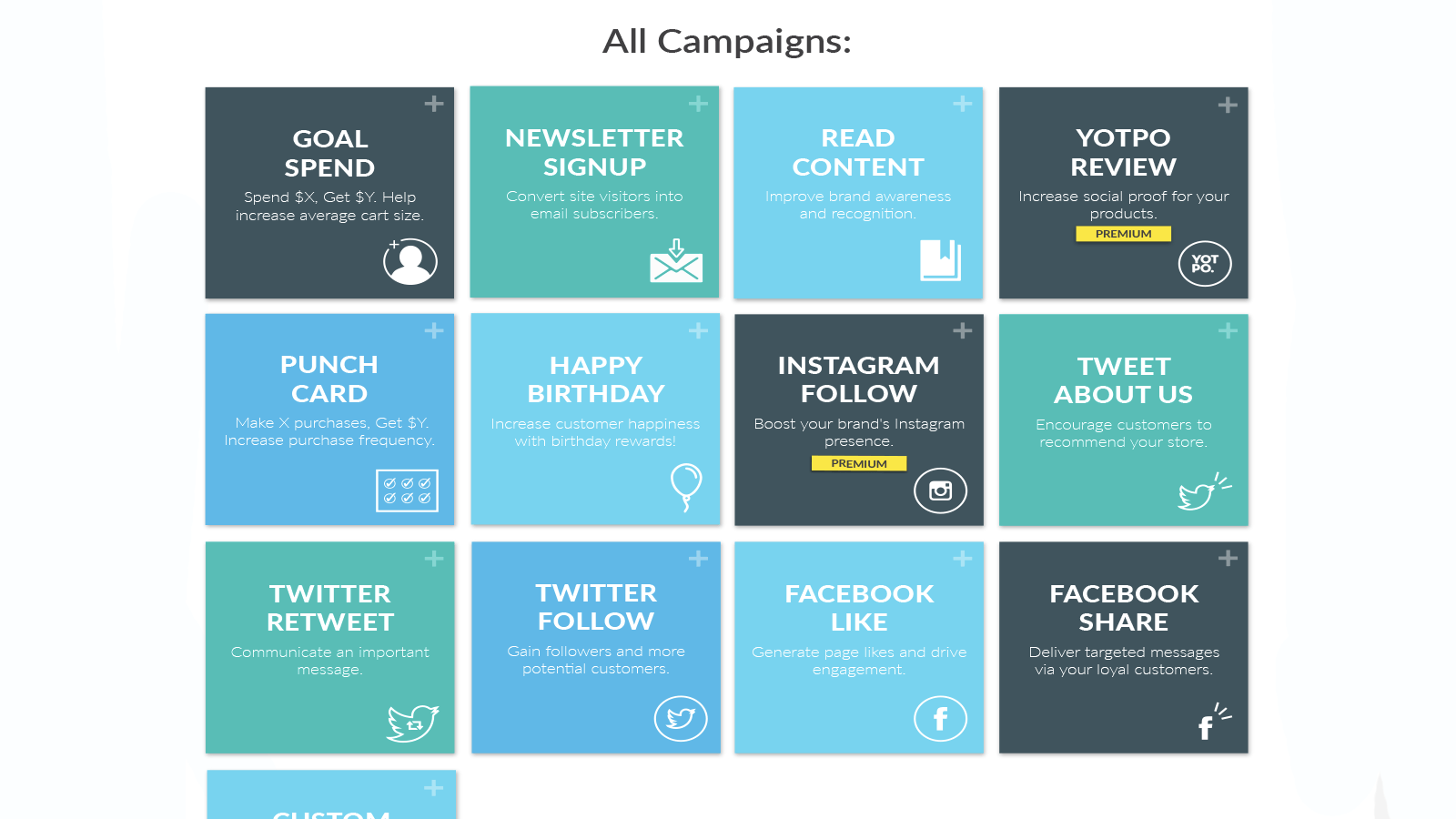
Used by some of the biggest Shopify stores, Swell’s app lets you use VIP tiers and gamification techniques to give your customers a sense of exclusivity and ultimately garner more engagement.
Reward your customers with more than 15 actions, like referrals, higher order values (spend $X, get $Y), making more purchases (make X purchases, get $Y), writing reviews, reading or viewing specific content, and more. And the best part: It’s free for up to 100 orders a month.
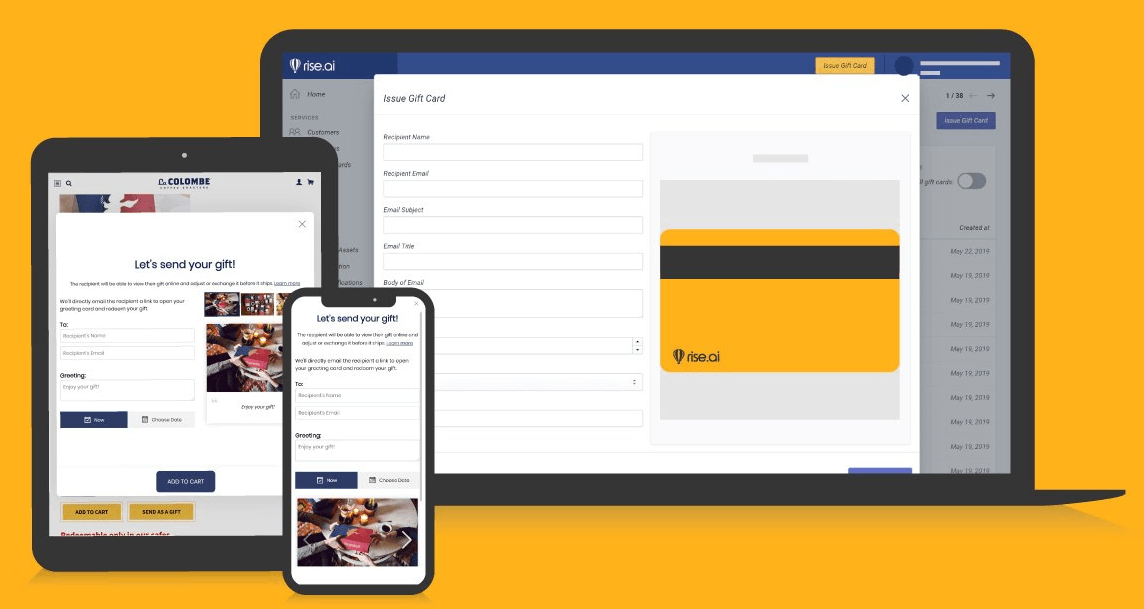
This app from Rise.ai focuses on using gift cards and store credit for building brand loyalty. Customers can send branded vouchers and gift cards via email and instant message, and they’re usable across multiple stores.
You can send bulk gift card campaigns and offer credit, loyalty points, and discounts to incentivize purchases.
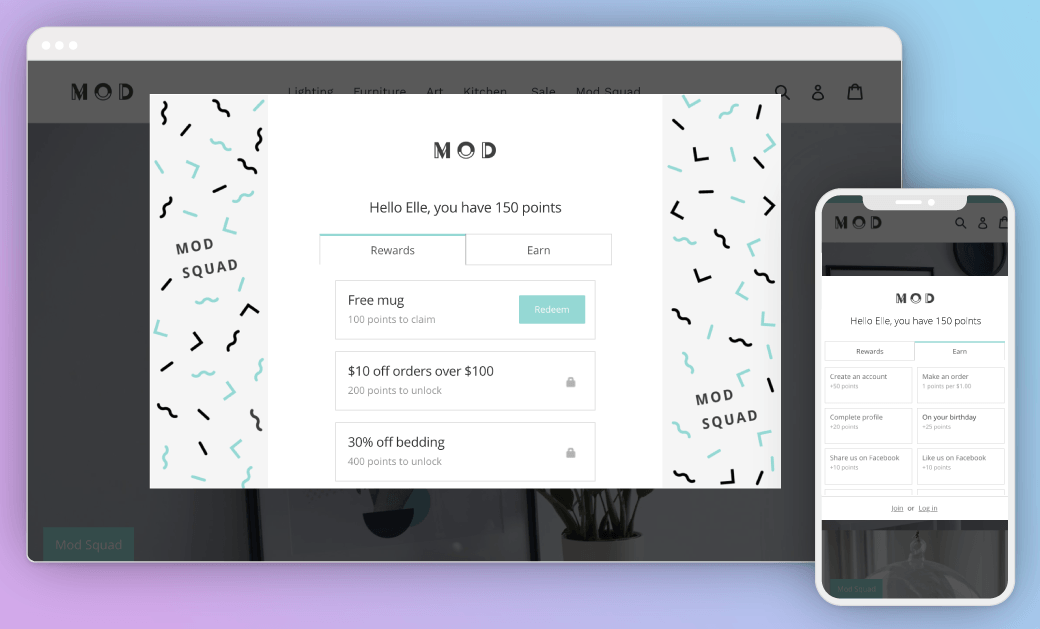
Marsello specializes in marketing automation, with features that aid in your quest of building brand loyalty. You can automatically segment your customers into relevant groups, sending them targeted emails for every stage of the sales funnel.
The app’s loyalty program automatically rewards loyalty points to your customers based on factors like spend, product reviews, referrals, social media engagement, and more.
Meet and Exceed Your Goals With Brand Loyalty
Having an online store – especially a dropshipping store – isn’t getting any less competitive.
To plow their competition and secure their share of the market in the long run, savvy brands are building brand loyalty strategies into virtually every aspect of their businesses.
From targeted brand loyalty programs to better customer service to more personalized experiences, brand loyalty gives your company a highly significant boost. Not to mention, you’ll also have a much better chance of meeting and sprinting past your business goals.
What types of brand loyalty are you incorporating into your business model? Let us know in the comments below.



